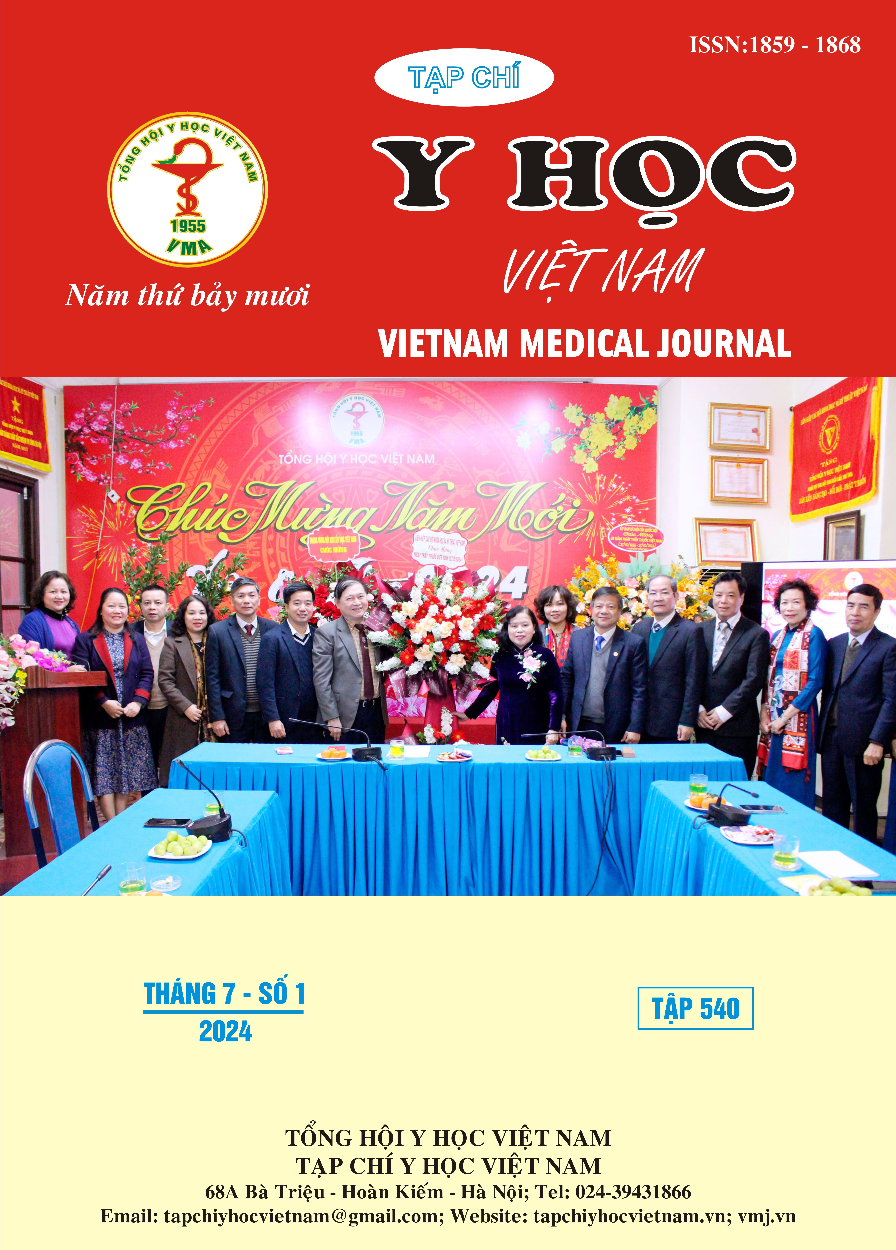A STUDY ON THE CHARACTERISTICS OF PATIENTS WITH PERMANENT PACEMAKERS IMPLANTED AT CHỢ RẪY HOSPITAL
Main Article Content
Abstract
Objective: To investigate the clinical, subclinical and pacemaker characteristics of patients with permanent pacemaker implantation at Cho Ray Hospital. Subjects and Methods: A cross-sectional study of 134 cases from December 2023 to March 2024 at the Arrhythmia Department of Cho Ray Hospital. Clinical, subclinical, pacemaker type, procedure time and parameter characteristics were analyzed by using R version 4.3.1 (p < 0.05). Results: The most common indications for pacemaker implantation were sick sinus syndrome (33.6%) and atrioventricular block (29.9%). The most commonly implanted device was the dual-chamber pacemaker (61%), followed by ICD (18%), single-chamber pacemaker (12%), and CRT (9%). The median (IQR) time for single-chamber pacemaker implantation was 65 (57.5-82.5) minutes, which was significantly shorter (P < 0.001) than that for dual-chamber pacemaker implantation (90 (70-120) minutes). The two most common pacing modes were DDDR and DDD, accounting for 41.8% and 30.6%, respectively. Conclusions: The implantation time for single-chamber pacemakers was shorter than that for dual-chamber pacemakers. All parameters checked during pacemaker implantation were within acceptable limits. The two most common pacing modes were DDDR and DDD.
Article Details
Keywords
Pacemaker, Pacing Mode, Threshold, Impedance, Sensing
References
2. F. M. Kusumoto et al., "2018 ACC/AHA/HRS Guideline on the Evaluation and Management of Patients With Bradycardia and Cardiac Conduction Delay: A Report of the American College of Cardiology/American Heart Association Task Force on Clinical Practice Guidelines and the Heart Rhythm Society," J Am Coll Cardiol, vol. 74, no. 7, pp. e51-e156, Aug 20 2019.
3. A. E. Epstein et al., "2012 ACCF/AHA/HRS focused update incorporated into the ACCF/AHA/HRS 2008 guidelines for device-based therapy of cardiac rhythm abnormalities: a report of the American College of Cardiology Foundation/American Heart Association Task Force on Practice Guidelines and the Heart Rhythm Society," Circulation, vol. 127, no. 3, pp. e283-352, Jan 22 2013.
4. H. M. Lak and A. Goyal, "Pacemaker Types and Selection," in StatPearls. Treasure Island (FL) ineligible companies. Disclosure: Amandeep Goyal declares no relevant financial relationships with ineligible companies., 2024.
5. Huỳnh Văn Minh, Nguyễn Tri Thức, "Nghiên cứu đặc điểm lâm sàng, cận lâm sàng và vai trò máy tạo nhịp hai buồng trong điều trị rối loạn nhịp chậm tại bệnh viện Chợ Rẫy," Tạp chí Y Học TP. Hồ Chí Minh, vol. 18, 2, pp. 168-174, 2014.
6. Huỳnh Văn Minh, Hoàng Anh Tiến, Đoàn Khánh Hùng, Nguyễn Vũ Phòng, Ngô Viết Lâm, Phạm Tuấn Hiệp, Nguyễn Xuân Hưng, "Nghiên cứu áp dụng tạo nhịp tim vĩnh viễn và tối ưu hoá lập trình tại Bệnh viện Đại học Y Dược Huế," Tạp chí Y Dược học - Trường Đại học Y Dược Huế, vol. 8, 3, pp. 114-121, 2018.
7. C. Blomstrom-Lundqvist and B. Ostrowska, "Prevention of cardiac implantable electronic device infections: guidelines and conventional prophylaxis," Europace, vol. 23, no. Suppl 4, pp. iv11-9, May 25 2021.
8. M. R. Carrion-Camacho, I. Marin-Leon, J. M. Molina-Donoro, and J. R. Gonzalez-Lopez, "Safety of Permanent Pacemaker Implantation: A Prospective Study," J Clin Med, vol. 8, no. 1, Jan 1 2019.


